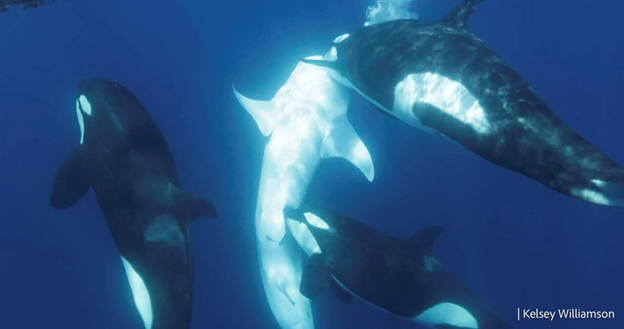Four videos of orca hunting sprees, the earliest from 2018 and the latest from 2024, suggest that an orca pod in the Gulf of California is specialising in hunting whale sharks, the largest fish in the world. The unusual behaviour has emerged among a pod of killer whales provides a rare glimpse into the intricate strategies employed by these animals.
The analysis, published in Frontiers in Marine Science, focused on images and videos capturing these interactions, identifying individual orcas by distinctive markings such as dorsal fin shapes and scars. Among the pod, a male dubbed Moctezuma appeared in three of the four recorded events, often working alongside another orca thought to be part of his pod.
Photo: NOAA
“We show how orcas displayed a collaboratively hunting technique on whale sharks, characterized by focusing on attacking the pelvic area causing the whale shark to bleed out and allow orcas access to the lipid-rich liver,” said Erick Higuera Rivas, a marine biologist at Conexiones Terramar and one of the authors of the study.
Orcas rank as a top — and extremely versatile — predator in the world’s oceans. Orcinus orca pods have been documented taking down adult great blue whales off the Western Australia coast, and harassing boaters off the Spanish coast. They’ll prey on sea turtles, cephalopods, pinnipeds and seabirds.
‘Tonic immobility’
The orcas repeatedly strike whale sharks to flip them onto their backs, inducing tonic immobility—a temporary state in which the sharks become motionless and unable to escape.
“In that position the sharks enter a state of tonic immobility and can no longer move voluntarily or escape by going deeper,” Higuera Rivas said. “By keeping it under control, the orcas then have greater ease and speed in approaching the pelvic area of the shark and are able to extract organs of nutritional importance for them.”
Orcas work together to bring the whale shark closer to the surface. Photo: Kelsey Williamson
Whale sharks, particularly juveniles, frequent aggregation sites in the Gulf of California, making them more susceptible to predation. In addition, these sites attract human activity, including tourism, which could disrupt the natural dynamics between predators and prey.
Higuera Rivas emphasizes the need for better regulation of marine tourism to minimize its impact on these ecosystems, ensuring that human interactions with wildlife are controlled.
“There must be a specific regulatory norm that guarantees that any type of non-extractive use activity is carried out in a respectful and sustainable manner,” he said.
The findings also bring attention to the potential vulnerability of these orcas. If their survival depends on a specific prey species that faces threats from climate change or other environmental pressures, the long-term viability of this learned hunting strategy may be at risk.
“It is very impressive how orcas work together strategically and intelligently to access only a very specific area of the prey,” Higuera Rivas said. “It highlights what great predators they are.”

